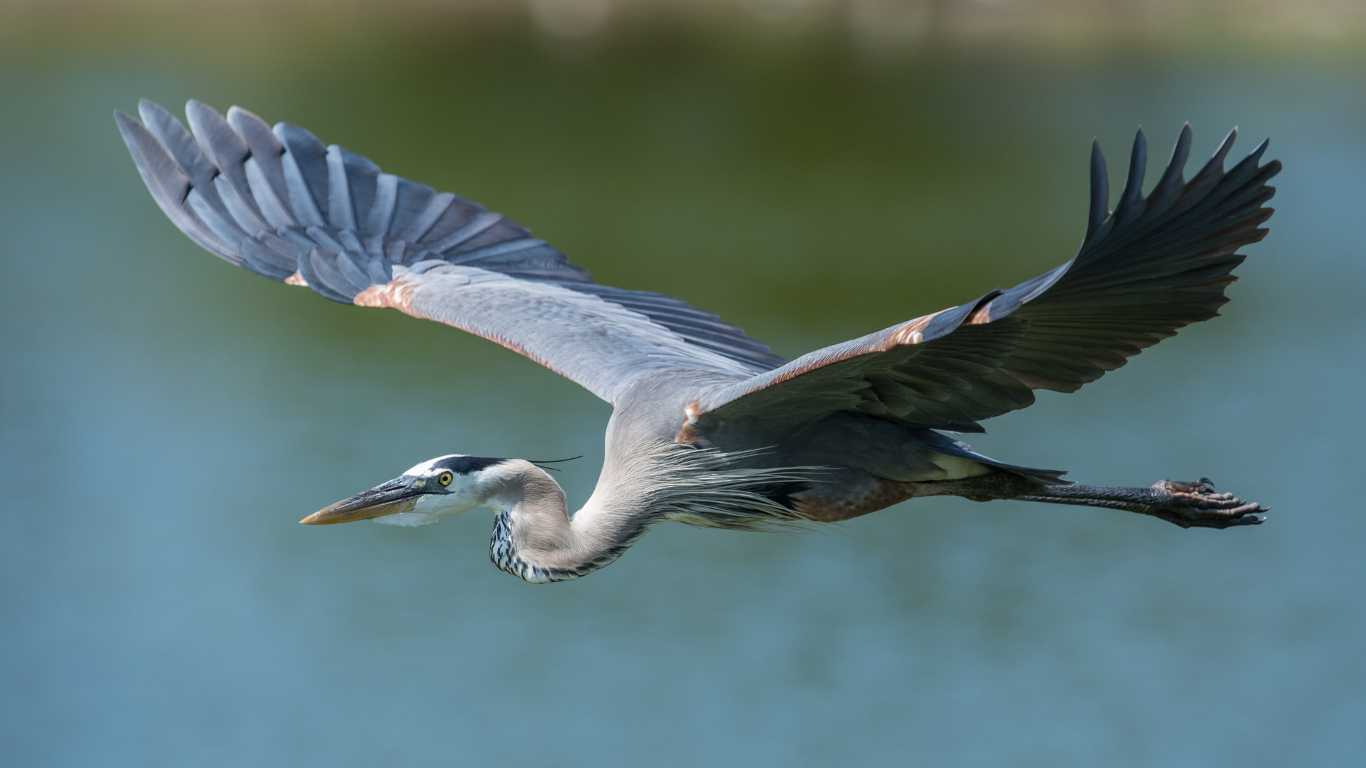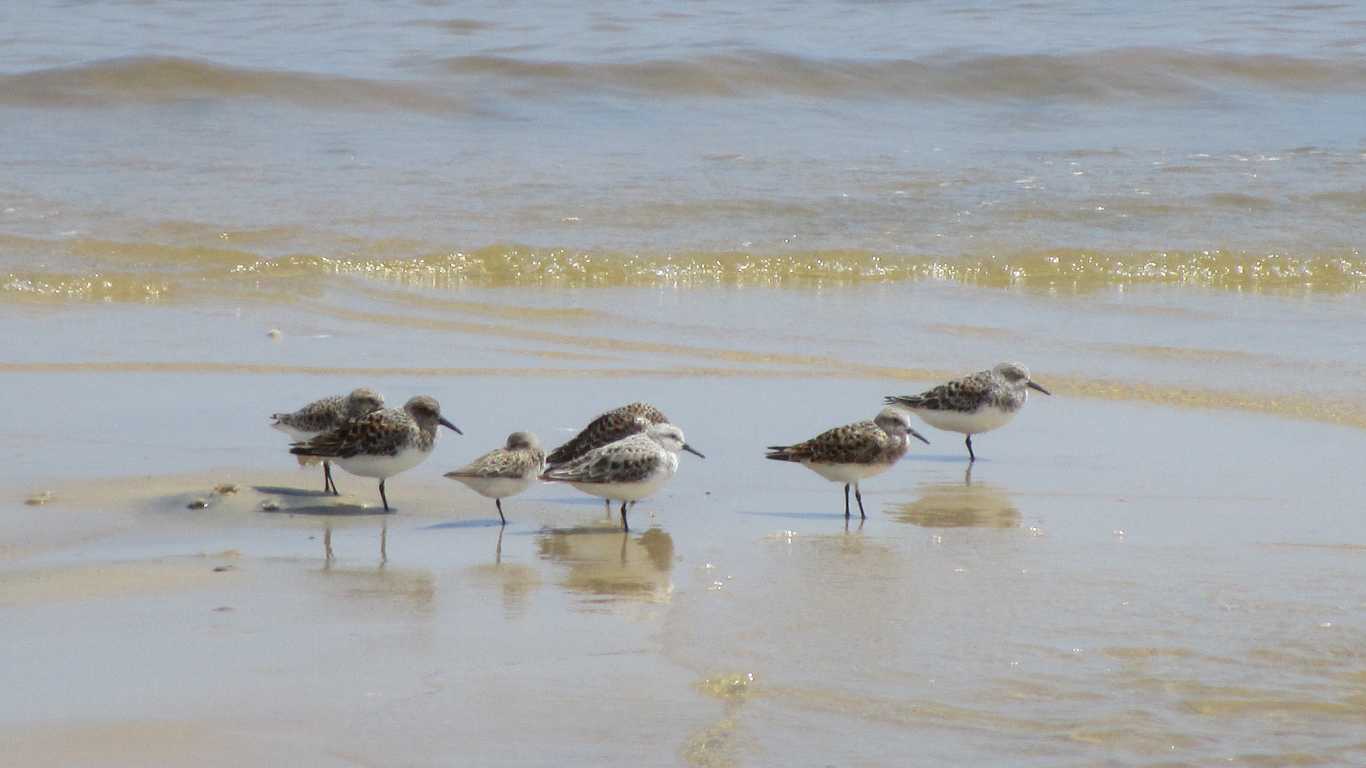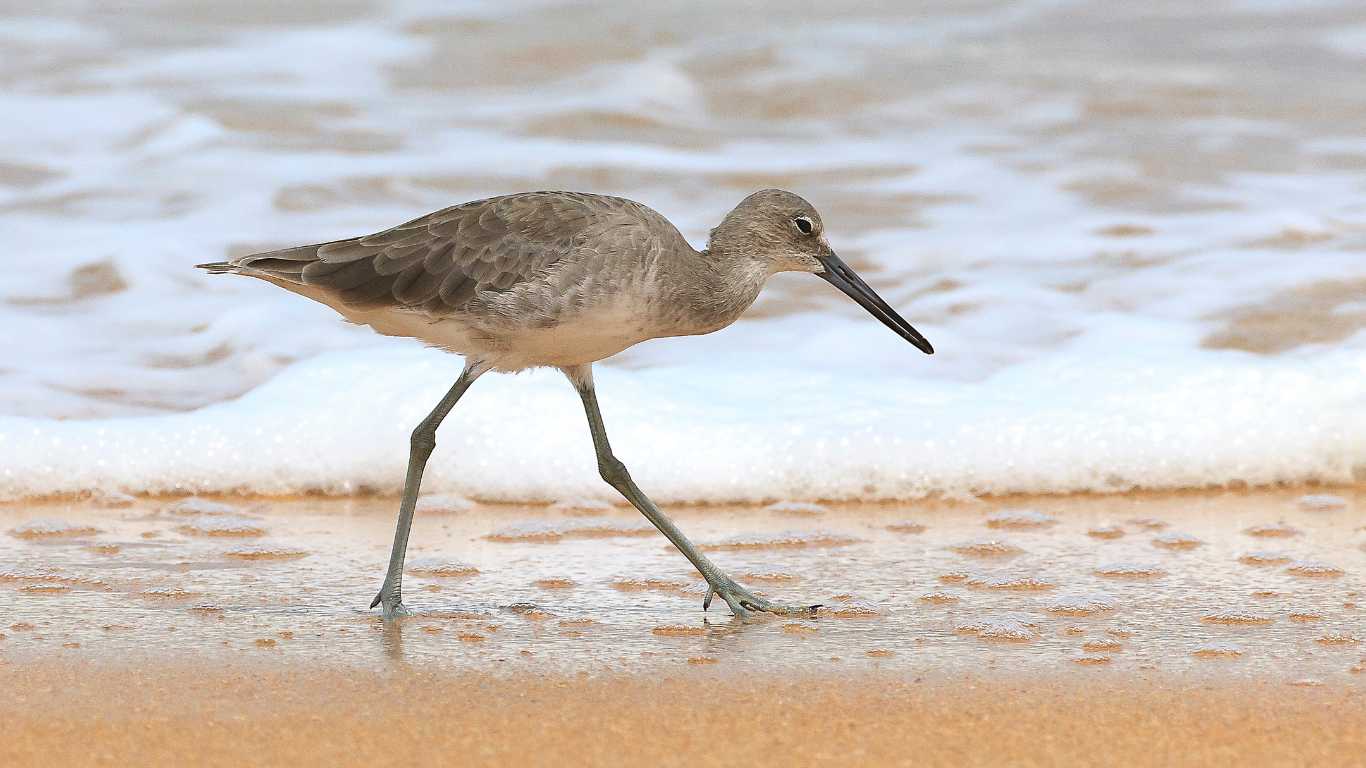If you spend time on the beach, go boating or kayaking, or even take a walk in your neighborhood, you’ll likely spot several of Charleston’s shorebirds. The area is home to many beautiful and intriguing birds, making bird-watching a delightful experience for both visitors and locals.
Even if you’ve lived in Charleston your entire life, it’s hard not to admire the natural environment around you. The city is unique not only because of its rich history and culture but also because of its stunning surroundings and native wildlife.
Shorebirds vs. Seabirds: What’s the Difference?
Shorebirds and seabirds are both types of aquatic birds, but they have distinct lifestyles and habitats. Here’s a quick guide to understanding their key differences:
Shorebirds
- Habitat: Usually found along the shore, in marshes, or near inland waterways.
- Diet: Hunt for fish, shrimp, and crabs. They also feed on invertebrates found in mudflats and inter-tidal areas.
- Behavior: Often seen wading in shallow waters, poking their bills into the ground in search of food.
- Migration: Many shorebirds are migratory and travel long distances between breeding and wintering grounds.
- Examples: Plovers and sandpipers are common shorebirds.
Seabirds
- Habitat: Spend most of their lives at sea. They only come inland to nest or during storms.
- Diet: Typically forage over the ocean, catching fish or squid.
- Behavior: Known for nesting in large colonies on coastal islands and barrier beaches. This helps protect them from predators.
- Nest Sites: Seabirds nest in large groups, vigilant against predators.
- Examples: Gulls, puffins, and albatrosses are well-known seabirds.
Visual Differences
- Coloration: Seabirds often have countershading, meaning they are darker on top and lighter underneath. This helps them blend into their oceanic environment. Shorebirds typically have more varied coloration based on their specific habitats.
- Body Size: Seabirds generally have larger bodies adapted for long flights over the ocean, while shorebirds are usually smaller and more agile for wading.
By looking at where these birds are found and their behavior, you can easily tell shorebirds and seabirds apart. Whether you see them on the coast or far out at sea, each type of bird is adapted to its unique way of life.
All About 10 Common Charleston Shorebirds (and Seabirds)
1. Coastal Pelican

When you visit Charleston’s beaches, you are likely to see Coastal Pelicans. These impressive birds are often seen gliding along the shoreline, forming lines in the sky. They hunt by diving into the water to catch fish, which can be an exciting sight.
Coastal Pelicans mainly eat fish but also sometimes eat crustaceans. They nest in groups and usually lay two to four eggs. These birds can grow up to about 4.5 feet long, and their wingspan can exceed 6.5 feet. Occasionally, you might also see American White Pelicans in the area. They are mostly white with yellow-orange beaks and black feather tips.
2. Large Heron

Large Herons have a striking appearance and are common in Charleston. They can often be seen flying or wading near ponds. Despite their size, their blue and gray colors help them blend into the marshlands. During the nesting season, you might spot their large nests in trees near water.
These herons are quite tall, reaching up to 4.5 feet. They make a distinctive “croak” when they land or take off. Besides Large Herons, you might also see smaller herons like Little Blue Herons or Tricolored Herons. Little Blue Herons have a consistent blue-purple color, while Tricolored Herons are gray-blue with white underbellies.
3. Tall White Heron

When you see a large, slender white bird along the shoreline, it’s likely a Tall White Heron. These elegant birds are a majestic sight and use slow, powerful wingbeats to fly. Unlike Large Herons, they are easy to spot against the marsh grasses and mudflats.
Tall White Herons were once nearly extinct due to hunting for their feathers but now have a healthy population. They build their nests high in trees and typically lay three to four pale blue-green eggs. They usually grow to about 3.5 feet tall.
4. Long-Beaked Ibis

Long-Beaked Ibises are unique birds that you can often see in Charleston. These tropical-looking birds are white with red legs, long red beaks, and black-tipped wings. You might see groups of them probing the mud for food or flying overhead.
Ibises eat a variety of items, including small crabs, fish, frogs, and snails. They lay up to five eggs, which both parents help to incubate and feed. Their calls often sound like grunts and growls.
5. Pink Spoonbill

Pink Spoonbills are one of the most colorful birds in Charleston. These large birds have pink and white feathers and long, spoon-shaped bills. You’ll typically see them wading in marshes alongside herons and egrets.
Pink Spoonbills migrate to Charleston for breeding in late spring and early summer. They nest in groups and usually lay two or three eggs. The pinkness of their feathers becomes more vibrant as they age, and their bills develop the spoon shape after about a week. They are the only species of spoonbill in the Americas.
6. Small Shore Bird

Charleston is home to several types of Small Shore Birds. You often see these small birds feeding along the shoreline or flying low over the water. They are known for their distinctive “peep” sounds.
Small Shore Birds can be hard to differentiate, but common species include the Least Sandpiper, the Western Sandpiper, and the Spotted Sandpiper. Least Sandpipers have brown and black feathers with white underbellies. Western Sandpipers have similar coloring but more of a hunchback look. Spotted Sandpipers are uniformly colored on their wings and develop brown spots on their bellies as adults.
7. White Egret

White Egrets are smaller than Tall White Herons but share the same snow-white plumage. They have short black beaks and characteristic bright yellow feet. They are plentiful in Charleston and are often seen along the shore.
In the past, these birds were hunted almost to extinction for their feathers, but now they are abundant and widespread. They have wispy feathers on their head, chest, and tail that often blow in the wind. White Egrets lay two to six pale blue-green eggs, which hatch after about three weeks.
8. Low-Flyer
Low-Flyers get their name from their unique way of hunting. They skim the water’s surface with their open beaks while flying at high speeds. These birds, also known as Black Skimmers, have black bodies and wings with white underbellies.
The most noticeable feature of Low-Flyers is their beak, which is orange near the head and fades to black. They nest on sandy beaches and lay eggs that blend into the environment, making it hard for predators to find them.
9. Coastal Willet

Coastal Willets are larger than many other shorebirds. They are plain brown with long legs and stout bills. You often see them wading in the water or walking along the shore.
Coastal Willets are known for their loud calls, especially when they feel threatened. They eat insects, small fish, and marine invertebrates. During their breeding season, they nest in grassy or marshy areas and usually lay four eggs.
10. Stork of the Marsh

Storks of the Marsh are among the largest birds you’ll see in Charleston. They have white bodies, bald black heads, and long legs. These storks are often seen wading in marshes and wetlands.
Storks of the Marsh feed on fish, frogs, and other aquatic animals. They nest in trees in large colonies, where they lay two to five eggs. These birds are a striking sight with their large size and distinctive appearance.
With this guide, you should have a clear picture of the variety of shorebirds and seabirds that make Charleston their home. Each bird has unique characteristics, making bird watching an exciting pursuit in this coastal city.
Frequently Asked Questions
Which kinds of shorebirds are usually seen near Charleston’s coast?
The Charleston coastline is home to a variety of shorebirds. Common species include Black Skimmers, American Oystercatchers, and several types of terns.
How can you tell different shorebirds apart in the South Carolina low country?
Identifying shorebirds can be done by observing their size, color, and call. For instance, Black Skimmers have distinctive black and white feathers with a bright red beak, while American Oystercatchers are easily recognizable by their long, orange bills.
Where are the top spots for birdwatching in the Charleston region?
Great locations for birdwatching around Charleston include the Crab Bank Seabird Sanctuary, the Isle of Palms, and the Cape Romain National Wildlife Refuge. Each of these spots provides a different range of habitats and birds to observe.
What key features help identify seabirds native to South Carolina?
Seabirds in South Carolina often have features that help them thrive in coastal environments. Brown Pelicans have large, long bills with a pouch for scooping fish, while terns are smaller with slender bodies and pointed wings, ideal for diving into water.
Which big coastal birds are most frequently seen around Charleston?
Large coastal birds frequently seen near Charleston include the Brown Pelican and the Great Blue Heron. These birds often stand out due to their significant size and unique behaviors, such as the Brown Pelican’s diving for fish.
What kinds of seabirds typically make nests along the Charleston shore?
Seabirds that often nest along Charleston’s coastline include Brown Pelicans, Black Skimmers, and various species of terns. They typically build nests directly on the ground in sandy or shell-covered areas.




